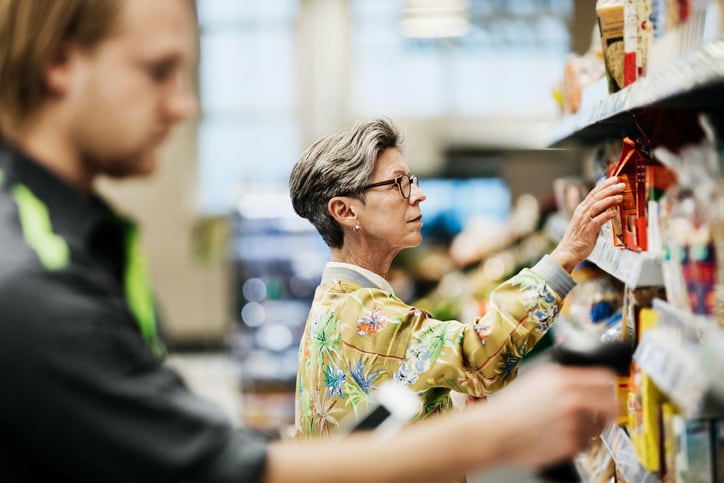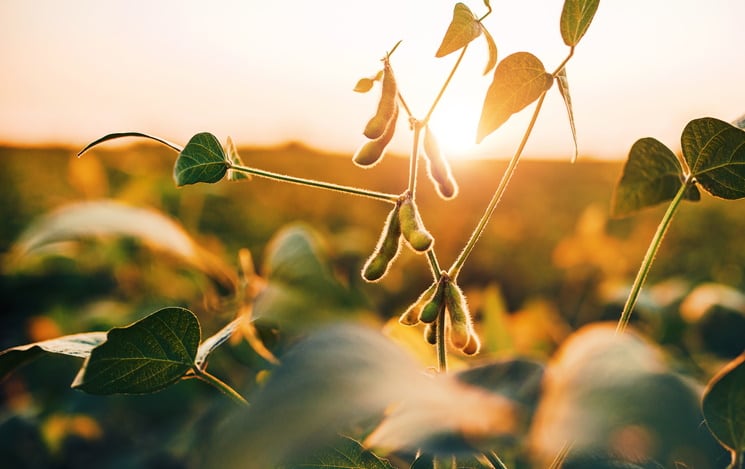He’s identified global sustainable food trends to watch in 2022.
Deforestation free commodities
COP26 saw the ‘Deforestation Pledge’ where over 100 global leaders and CEOs from over 30 financial institutions committed to spend £8.75 billion ($12bn) of public funds to protect and restore forests, alongside £5.3 billion ($7.2 billion) of private investment. “With 80% of global deforestation driven by the global trade in tropical commodities, such as soya and palm oil, expect to see increasing pressure, focus and scrutiny on public and private sector policies aimed at addressing deforestation from food commodities,” Driscoll said. “This will include pressure to stop the import of commodities, such a soya, which continue to drive deforestation.”
Resilience based on local diversity foods
The pandemic has shone a light on the fragility of our global commodity chains and centralised distribution networks. Expect to see much more consumer demand for a greater diversity of nutritious and local foods, said Driscoll. “Today 75% of the global food supply comes from only 12 plant and five animal species. Just three (rice, maize, wheat) make up nearly 60% of calories from plants in the entire human diet – and yet there are over 20,000 species of edible plants in the world, many of which are nutrient rich and may be more suited to changing climatic conditions.”
Regenerative and agroecological farming
Regenerative agriculture means different things to different people. Generally, it refers to practices consisting of minimum or reduced tillage, cutting the use of chemical pesticides and fertilizers, crop rotation, well-managed grazing versus industrial feed, and increasing soil fertility through biological means such as the use of cover-cropping.
Advocates agree regenerative agriculture is vital in helping the world’s biggest foods brands achieve their net zero plans and meeting consumer demand for sustainable products. The likes of Nestlé, Danone and Unilever are supporting regenerative agricultural practices. But Driscoll warned there are growing concerns about ‘corporate greenwashing’ of regenerative agriculture.
“Expect more scrutiny on organisations delivering results with greater attention on the development of on farm metrics, which will be required to monitor impacts,” he noted.
Upcycled foods
Food brands are busy unlocking upcycled food opportunities at scale. This offers the change to discover new revenue streams while addressing pertinent problems such as food waste and its impact on the climate crisis.
Spoonshot research reveals awareness has grown 71% since 2019. Meanwhile a fresh report from Ecovia Intelligence predicts consumer demand for upcycled foods will ‘surge’ in 2022. Ecovia researchers say new product launches and standards are making upcycled foods more visible, with the Upcycled Food Association’s certification scheme launched last year.
“With 30% of all food grown globally going to waste, contributing about 8% of the world’s total greenhouse gas emissions, new market outlets for otherwise wasted products (fruit and vegetable peelings, peelings, spoilt foods etc) makes sense,” said Driscoll. “Much of what’s left over as waste once a food is processed contains valuable nutritional components, even though it’s currently only used for animal feed or just thrown away.”
Healthy plant-rich diets
Last year we saw another year of growth within the plant-based foods market with innovation focussing on replicating chicken, beef, and cheese. There are fears however about plant-based fatigue setting in.
Driscoll said brands need to up their game from a health perspective. “Food businesses need to be super careful to ensure that that plant-based foods are less healthy than the meat items they were designed to replace.”
Less but better meats
In a similar vein, the industry remains keen to target end consumers who are flexitarians and omnivores: people who will continue to eat animal-based products but who just want to eat less of it. As well as meat alternatives therefore, they will demand less but better meat, observed Driscoll.
“With the impacts of industrial forms of factory farming increasingly in the media spotlight, with concerns around the animal welfare, climate, biodiversity, and health impacts of such systems, expect much more discussion with regards to the role of livestock and meat within our food system and what defines ‘better’ meats.”
Health and immunity boosting foods
Demand for functional foods that deliver digestive health isn’t a new trend – but it is one that looks set to continue accelerating.
Take Unilever’s new partnership with microbiome experts at Holobiome to identify food and beverage ingredients that could positively impact ‘mental wellbeing’ by targeting the gut-brain axis.
“An increasing body of research is linking what we eat with our mental health and well-being,” agreed Driscoll.
Traceability and transparency
Similarly, transparency remains important to citizens according to latest research, which suggests 81% of shoppers say transparency is important or extremely important to them both online and in-store.
Technological innovations to improve traceability of food value chains will continue with greater emphasis on connecting farmer to citizen – Capturing data from Internet-of-Things, sensors and blockchain and the use of Artificial Intelligence will help provide more visibility to worker conditions, health, climate, water, and food waste impacts.
Carbon and eco-labelling
Amid improving tech, a big challenge for food companies is how to communicate their sustainability efforts – which may involve the installation of innovative cloud-based platforms or blockchain technology throughout complex supply chains -- in a way that's easily and quickly understandable for their customers.
Eco labels, which combine carbon rating with a host of other eco rating scores are therefore “likely to take off big time in 2022”, predicted Driscoll.
Packaging innovation and reductions
Similarly, more food brands than ever are questioning the sourcing of their packaging materials and there will be continued pressure to do so as plastic waste continue to hit the news headlines. “In 2022 expect to see a move towards edible packaging options made from rice paper, seaweed, or corn-starch,” revealed Driscoll.
Sustainability versus inflation fears
But how does the sustainable food trend sit in an environment of rising inflation when many consumers are watching their pennies?
Most consumers care about sustainability but are often unable or unwilling to pay more for ‘greener’ alternatives, research suggests. Meanwhile, inflation in Europe is running at the highest level since the creation of the euro in 1999. In the UK, the cost if living has risen at its fastest pace for 30 years.
Many argue that greater collaboration is needed between suppliers, manufacturers and retailers to remove the price barrier preventing shoppers from purchasing sustainable products.
Driscoll said government action is also needed to level the playing field. “Governments need to step up to the plate and provide a range of fiscal incentives and disincentives to reflect the true health, sustainability and social costs of food. Governments should be doing more to ensure sustainable and healthy foods/diets are accessible and affordable most of the UK population - this requires levelling the playing field - so agricultural subsidies that support the access to and the production of sustainable produced foods That means supporting regenerative and agroecological farming practices and greater levels of taxation on ultra-processed foods.”





